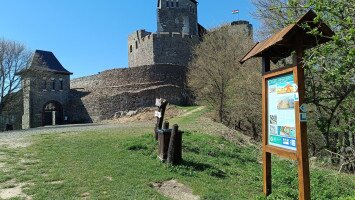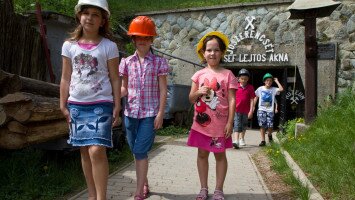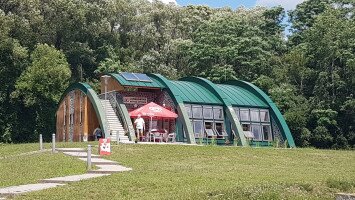Natural area of local importance
How to get there
You can find Benczúrfalva turning off the main road No. 22, along the Megyer stream, about 5 km from Szécsény. The settlement belongs administratively to Szécsény.
History of the castle
On the main street of the former Dolány we find the 18th century Baroque castle. Built by the Wattay family, later owned by the Szontágh family. It was bought around 1890 by Count Pejacsevich Miklós. It was expanded several times during this period. Between 1910 and 1920 it was owned by the painter Gyula Benczúr. After his death, the village took the name Benczúrfalva. Later sculptor István Szabó Sr. lived in the mansard-roofed studio until his death. In the castle the II. After World War I there was a cultural center, a Producing Cooperative office, a school, a movement house, a warehouse and a medical office. In 2007, the Treasury Department decided to sell the state-owned manor house and park under its management. There are two polygonal battlements with tent roofs on the corners of the freestanding U-shaped, tiled-roofed one-storey mansion, with fences made of wrought iron and cast iron.
The vegetation of the castle park
The castle is built on a large plot with a garden of approximately 3 hectares. The typical English park was built when the castle was built. When the area was declared protected, a detailed list of species of woody plants in the park was compiled. These include maple (Acer campestre), green maple (Acer negundo) and early maple (Acer platanoides), horse chestnut (Aesculus hippocastanum), birch (Betula pendula), boxwood (Buxus sempervirens), hornbeam (Carpinus betulus), Judas-tree (Cercis siliquastrum),Hazelnut (Corylus avellana), Russian Olive (Elaeagnus angustifolia), Ash (Fraxinus excelsior), Black Walnut (Juglans nigra), White Poplar (Populus alba), Plane-tree (Platanusus acerifolia), Linden tree (Tilia cordata), Spruce-fir (Picea abies), White Pine(Pinus strobus), Douglas Fir (Pseudotsuga menziesii), Arbour (Thuja occidentalis), Tree of Life (Thuja orientalis), Bushy Yew (Taxus baccata), Pagoda-tree (Sophora japonica), Holly tree (Ilex aquifolium), Oregon False Cypress(Chamaecyparis lawsoniana), Juniper (Juniperus virginiana), Serbian spruce (Picea omorica), beech (Fagus sylvatica) and Broadleaf Holly (Ligustrum ovalifolium).
Special mention is made of the bushy yew (Taxus baccata), which is estimated to be 300 years old and consists of 8 to 10 strains. 200-year-old peduncle oak (Quercus robur) and the imposing black walnut (Juglans nigra). From the gate of the park, which today is marked by only two ruined columns, the way to the castle is surrounded by two lines of old horse-chestnut trees (Aesculus hippocastanum).
The fauna of the park
The neglected condition and relative undisturbed nature of the park contribute to the richness of the wildlife. Indigenous, old trees provide the living conditions for many insect species, wild bird and mammal species. In the absence of care, heavy shrubbery has begun in the area, so rich bush levels favor songbirds and smaller mammals. Among the protected beetles are the Stag-Beetle (Lucanus cervus), the Great Capricorn Beetle (Cerambyx cerdo), the Copper Beetle (Carabus ullrichi) and the daytime Peacock butterfly (Inachis io). Representatives of amphibians include Brown Toad (Bufo bufo), Tree Frog (Hyla arborea) and Forest Frog (Rana dalmatina). Among the reptiles, the nimble lizard (Lacerta agilis) may come before our eyes. Birds are more represented in the area. Common Tit (Parus major), Blackbird (Turdus merula), Starling (Sturnus vulgaris), Common Sparrow (Passer montanus), Chaffinch (Fringilla coelebs) and Common Cardigan (Carduelis carduelis) are common. Robin (Erithacus rubecula),Throstle (Turdus philomelos), House Sparrow (Passer domesticus) and Greenfinch(Carduelis chloris) are also relatively common. But there are also the Blue Tit (Parus caeruleus), Nuthatch (Sitta europaea), the Great Woodpecker (Dendrocopos major) and the Brown Owl (Strix aluco) searching for the old deciduous trees. Among the mammals, the Eastern Hedgehog (Erinaceus concolor), the Common Mole (Talpa europaea), the Common Squirrel (Sciurus vulgaris) and the Noctule Bat (Nyctalus noctula) are represented in the area.
The park is open to the public. |
















